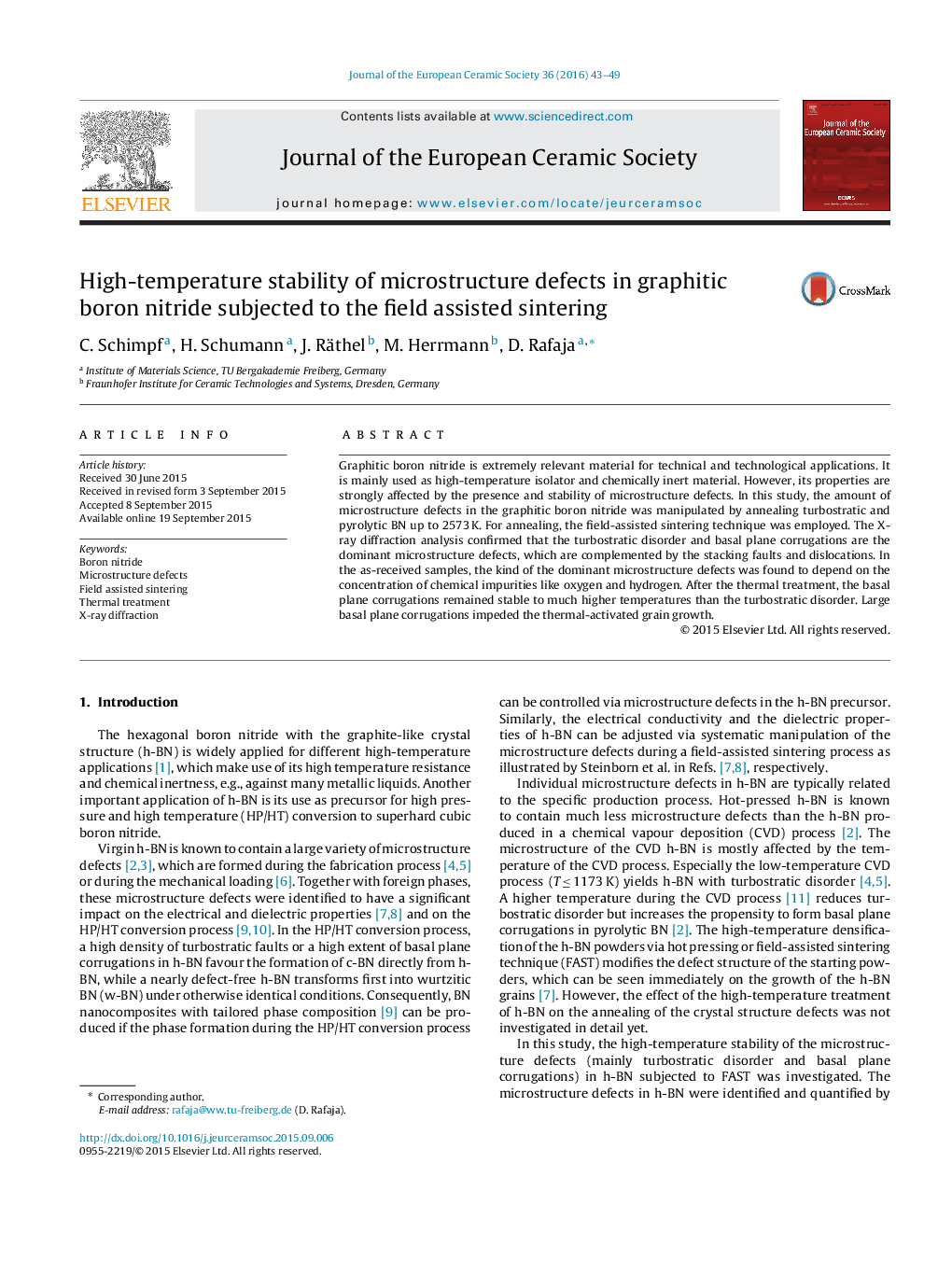| کد مقاله | کد نشریه | سال انتشار | مقاله انگلیسی | نسخه تمام متن |
|---|---|---|---|---|
| 1473850 | 991064 | 2016 | 7 صفحه PDF | دانلود رایگان |
Graphitic boron nitride is extremely relevant material for technical and technological applications. It is mainly used as high-temperature isolator and chemically inert material. However, its properties are strongly affected by the presence and stability of microstructure defects. In this study, the amount of microstructure defects in the graphitic boron nitride was manipulated by annealing turbostratic and pyrolytic BN up to 2573 K. For annealing, the field-assisted sintering technique was employed. The X-ray diffraction analysis confirmed that the turbostratic disorder and basal plane corrugations are the dominant microstructure defects, which are complemented by the stacking faults and dislocations. In the as-received samples, the kind of the dominant microstructure defects was found to depend on the concentration of chemical impurities like oxygen and hydrogen. After the thermal treatment, the basal plane corrugations remained stable to much higher temperatures than the turbostratic disorder. Large basal plane corrugations impeded the thermal-activated grain growth.
Journal: Journal of the European Ceramic Society - Volume 36, Issue 1, January 2016, Pages 43–49
